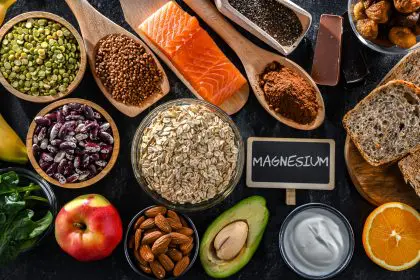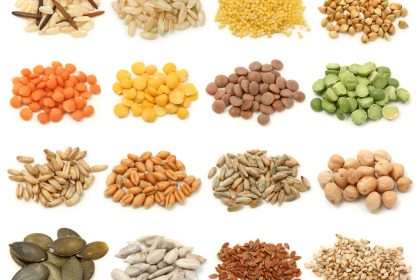As diabetes rates soar globally, nutritionists and health experts are turning to nature’s pantry for solutions. Emerging research points to a surprising duo in the fight against this chronic disease: fruits and nuts. These plant-based powerhouses, packed with essential nutrients, fiber, and healthy fats, are proving to be formidable allies in maintaining healthy blood sugar levels and reducing the risk of diabetes.
The fiber factor: Nature’s blood sugar stabilizer
At the heart of fruits’ and nuts’ diabetes-fighting prowess lies their rich fiber content. This complex carbohydrate acts as a natural regulator of the body’s sugar use, ensuring a gradual release of glucose into the bloodstream.
Apples, oranges, and pears shine as excellent sources of soluble fiber, while nuts like almonds and walnuts offer a mix of soluble and insoluble varieties. This fiber cocktail not only aids digestion but also promotes a feeling of fullness, helping to curb overeating – a key factor in diabetes prevention.
Recent studies suggest that boosting daily fiber intake can significantly improve insulin sensitivity, allowing the body to use this crucial hormone more effectively. For those at risk of diabetes, this simple dietary change could be a game-changer.
Low glycemic index: The gentle approach to glucose
The glycemic index (GI) has become a buzzword in diabetes prevention, and for good reason. Foods with a low GI are absorbed more slowly, preventing the sudden blood sugar spikes that can strain the body’s insulin response.
Berries, cherries, and citrus fruits lead the pack in low-GI fruits, making them ideal for maintaining steady blood sugar levels. Nuts, with their minimal carbohydrate content and healthy fat profile, barely register on the GI scale.
This low-GI approach is critical in preventing insulin resistance, the precursor to type 2 diabetes. By incorporating these foods into daily meals, individuals can help maintain healthy insulin sensitivity and reduce their diabetes risk.
Healthy fats: The unsung heroes of insulin function
While fats have long been vilified in health discussions, certain types play a crucial role in diabetes prevention. Nuts, in particular, are rich in monounsaturated and polyunsaturated fats – the “good” fats that improve insulin function.
Research shows that diets rich in these healthy fats can enhance insulin sensitivity, making it easier for the body to regulate blood sugar levels. Almonds, walnuts, and hazelnuts are standout sources of these beneficial fats.
When combined with naturally low-fat fruits, nuts create a balanced snack that provides energy and essential nutrients without causing sharp blood sugar rises. This combination is a powerful tool in maintaining a healthy weight, another key factor in diabetes prevention.
Antioxidants: The inflammation fighters
Chronic inflammation in the body can interfere with proper insulin function, leading to elevated blood sugar levels and increased diabetes risk. Both fruits and nuts come to the rescue with their high antioxidant content, which helps combat this harmful inflammation.
Berries, particularly blueberries, strawberries, and blackberries, are rich in anthocyanins and flavonoids – potent antioxidants shown to reduce inflammation and improve blood sugar regulation. Nuts, especially almonds and walnuts, pack a punch with vitamin E, a powerful cell protector.
By incorporating these antioxidant-rich foods into their diets, individuals can help reduce body-wide inflammation, potentially improving insulin sensitivity and lowering diabetes risk.
Nutrient density: The whole-body approach
Both fruits and nuts are nutritional powerhouses, offering a high concentration of essential vitamins and minerals relative to their calorie content. This nutrient density makes them ideal for supporting overall health and preventing diabetes.
Nuts, in particular, are rich in magnesium – a mineral shown to improve insulin sensitivity and lower the risk of type 2 diabetes. Studies suggest that individuals with higher magnesium intake have a significantly lower diabetes risk, making magnesium-rich foods like nuts an essential part of a diabetes-prevention diet.
Fruits contribute their own array of vital nutrients, including vitamin C and potassium, which support immune function, heart health, and healthy blood pressure levels – all crucial factors in overall wellness and diabetes prevention.
A natural prescription for prevention
As the world grapples with rising diabetes rates, the solution may be as close as the produce aisle. Incorporating more fruits and nuts into daily meals offers a simple yet powerful strategy for preventing this chronic disease. Their combination of fiber, low glycemic impact, healthy fats, antioxidants, and essential nutrients works synergistically to support healthy blood sugar levels and improve insulin sensitivity.
By embracing a diet rich in these plant-based foods, coupled with regular physical activity and weight management, individuals can take proactive steps toward reducing their diabetes risk. As research continues to unveil the benefits of these natural foods, it’s clear that nature has provided us with a sweet defense against one of the most pressing health challenges of our time.
In the fight against diabetes, fruits and nuts emerge not just as delicious snacks, but as potent allies in long-term health and wellness. Their incorporation into daily diets represents a tasty and effective approach to diabetes prevention, offering hope in the face of this growing global health concern.
This story was created using AI technology.

















